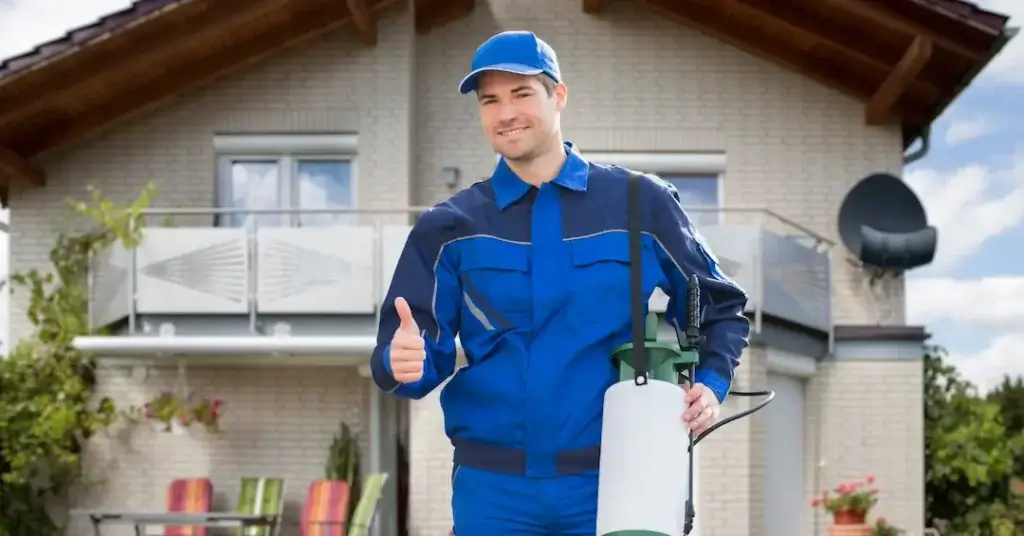Chicago Bug Infestation Removal: Quick and Reliable Pest Extermination
Chicago Bug Infestation Removal: Quick and Reliable Pest Extermination
Blog Article
A Comprehensive Overview to the Various Types of Bug Control Approaches
With the myriad of bug control techniques offered, it can be overwhelming to find the most efficient solution for a certain parasite problem. In this comprehensive overview, we will discover these different types of insect control approaches, providing understandings right into their applications and benefits. By the end, you will have a more clear understanding of which approach may be the ideal fit for your pest control demands.
Chemical Parasite Control Techniques

One common sort of chemical pest control is pesticides. Insecticides are chemical substances that are specifically formulated to kill or push back bugs. They can be used in various forms, such as sprays, lures, or cleans. Pesticides target particular parasites, such as insects, termites, or ants, and can be utilized both inside and outdoors.
One more sort of chemical pest control is rodenticides. These are chemical compounds designed to manage populations of rodents, such as rats and computer mice. Rodenticides are commonly used in lure form, which attracts the rats and afterwards kills them after intake. They are typically utilized in agricultural settings, in addition to in residential and commercial buildings (Customized pest control solutions Chicago).
Herbicide, additionally known as herbicides, are another sort of chemical pest control method. Herbicides are created to uniquely eliminate unwanted plants, called weeds, without causing damage to preferable plants. They are frequently utilized in agriculture, landscaping, and gardening to control the growth of unwanted plant life.
While chemical parasite control approaches can be very reliable in removing insects, it is very important to utilize them sensibly and comply with safety guidelines. Overuse or abuse of chemical pesticides can have unfavorable influence on human wellness and the atmosphere. Therefore, it is crucial to utilize these approaches sensibly and consider alternate parasite control methods whenever feasible.
Organic Bug Control Approaches
Organic pest control techniques entail using living organisms or all-natural materials to handle and manage pest populations. Unlike chemical approaches, which typically rely upon synthetic chemicals, organic control methods make use of the natural adversaries of bugs to control their populations. This technique is thought about even more eco-friendly and lasting, as it reduces the use of unsafe chemicals and decreases the risk of chemical resistance.
One commonly utilized organic insect control technique is the intro of all-natural predators or bloodsuckers. For instance, ladybugs are introduced to control aphids, while specific wasp types are launched to target caterpillars. These predators and parasites feed on pests, lowering their numbers and preventing invasions.
An additional organic control approach is the usage of pathogens. Specific germs, infections, and fungis can be used to infect and eliminate particular insects. The bacterium Bacillus thuringiensis is commonly used to regulate caterpillars, as it produces toxic substances that are lethal to these insects.
Biological control approaches can likewise entail the use of pheromones or natural materials that disrupt the mating patterns of insects. By disrupting their recreation, these methods aid to decrease pest populaces in time.
While organic insect control techniques are normally effective, they may call for longer periods to attain preferred outcomes compared to chemical approaches. Furthermore, cautious consideration should be offered to the option and release of natural opponents to prevent unintended injury to helpful microorganisms or ecosystems.
Physical Bug Control Methods
To properly take care of and regulate pest populaces, different insect control approaches called physical bug control techniques are used. These techniques include using physical barriers, traps, or devices to stop insects from accessing or damaging residential property. One common physical bug control method is making use of screens or nets to maintain bugs out of structures or gardens. These displays are commonly made from great mesh material that enables ventilation while stopping bugs from going into. An additional physical bug control technique is the installation of fencings or wall surfaces to keep bigger pests, such as deer or rabbits, out of yards or agricultural fields. These obstacles literally obstruct the insects' access to the location, minimizing the possibility for damage. In addition, traps and tools can be utilized to record or repel parasites. Sticky traps can be placed in areas where bugs are an issue, and the bugs come to be stuck to the sticky surface. Ultrasonic gadgets can also be made use of to send out high-frequency audios that are undesirable to insects, termite treatment companies causing them to leave the location. Physical insect control techniques are an eco-friendly alternative to chemical pesticides, as they do not count on the usage of damaging chemicals.
Natural Insect Control Methods
Natural parasite control approaches offer a lasting and green method to managing and eliminating bugs. These techniques prioritize making use of all-natural substances and biological representatives, reducing the demand for chemical pesticides that can harm the setting and human health and wellness. Among the most typical natural insect control techniques is organic control. This includes introducing natural predators or parasites to take advantage of or parasitize the bugs. For instance, cockroach prevention ladybugs are frequently presented to yards to control aphid populations. Another natural approach is the usage of repellents derived from plants. Specific plants, such as marigolds, lavender, and peppermint, discharge aromas that ward off pests like insects, flies, and ants. In addition, cultural control methods can be used to stop and take care of pest infestations. This includes correct hygiene, routine maintenance, and promoting biodiversity in the garden. Turning plants, removing yard debris, and motivating natural killers can aid avoid the accumulation of insects. By taking on these natural insect control methods, people and areas can efficiently manage pests while reducing the adverse influence on the atmosphere and human health and wellness.
Integrated Bug Management (IPM)
Integrated Bug Administration (IPM) is a thorough and organized technique to pest control that combines numerous methods and strategies to properly manage insects while minimizing making use of chemical pesticides. IPM aims to preserve insect populations listed below the economic injury level by making use of a mix of social, organic, and chemical control approaches.
Cultural control approaches involve changing the environment to make it less positive for insects. This can include practices such as plant rotation, appropriate hygiene, and the use of resistant plant selections. By developing negative conditions for bugs, social control approaches can substantially reduce pest populations.

Chemical control methods are utilized as a last hope in IPM. They entail the targeted and wise use of pesticides to handle pest populations. Unlike conventional bug control methods, IPM aims to lessen making use of chemical pesticides by utilizing different methods.
Integrated Parasite Monitoring (IPM) is a positive method that concentrates on long-lasting insect monitoring instead than counting entirely on responsive procedures. By integrating multiple control techniques, IPM supplies a much more sustainable and Get More Info environmentally friendly strategy to pest control.
Final Thought
To conclude, this article has actually provided an extensive overview of the different sorts of bug control methods. It discussed chemical, organic, physical, and natural insect control techniques, along with the integrated bug monitoring strategy. By recognizing these different approaches, people can make enlightened decisions on which bug control technique is most suitable for their certain needs and preferences. Efficient insect control is critical in keeping a healthy and balanced and pest-free atmosphere.
Report this page